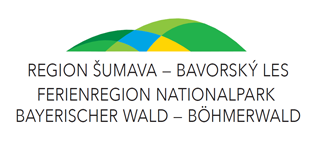Čachrov – History
The township of Čachrov - part Čachrov
The first written mentions of the settlement date back to 1352. Čachrov (Czachrow) is listed amongst other villages belonging to the Klatovy deanery. Vilém of Čachrov, who between 1380 and 1390 built a large citadel, which dominates the township to this day, is listed as Čachrov’s first owner. It is also necessary to mention the Baroque church of St. Vaclav. Čachrov’s history is tightly tied to the maintenance and significance of the citadel. There were alternating periods of development and decline. In pre-war history, the border between Bohemia and the Sudetenland, meaning between Czech and German settlements, is worth mentioning, as it led directly through Čachrov. For this reason, both Czech and Germans schools stood there. On October 10, 2006, the settlement was returned the status of township.
The township of Čachrov - part Javorná
The village of Javorná, originally called Zejbiš, used to be the seat of the high magistrates of the Royal Forest. A number of free estates scattered around the surrounding mountains used to belong to it.
The Zejbiš court
The Zejbiš court is one of the oldest settlements in the Royal Forest and formed the basis of the expansive later settlement Zejbiš rychta. The name Zjebiš is a mangling of the German word Seewiesen, meaning waterlogged meadows, which can be found below the court, alongside Ostružná all the way to Jesení and Čachrov. The name Zejbiš was later given to the entire settlement of the free border guards (Czech: Králováci, German: Konische Freibauern). It had a glassworks, a farm, and a saw mill. After 1600, the glassworks was moved to today’s Eisner’s court, then called New Zebis - the current Zejbiš court was then called Odd Zebis. In the middle of the 17th century, Zejbiš fell into the hands of an important glassmaking family of Gerl, who ran a number of glassworks in the 17th and 18th centuries and often held the post of high magistrates for all eight Králováci settlements in the Royal Forest. The court flourished up until the Second World War. In 1948, it was nationalised and moved into State property Javorná. Since then, many buildings either fell into disrepair or ceased to exist completely. The court itself is in serious disrepair.
The dominant historical site in Javorná is the baroque church of St. Anne. Between 1698-1701, according to Antonín Gilmetti’s plans, the western part of the church with a frontage and two characteristic towers with an onion shaped dome was added to the original chapel. The towers were covered with shingle. In front of the church stands a statue of Saint John of Nepomuk from 1723 and a memorial 300-year-old lime tree. Headstones from the 18th and 19th centuries commemorate local families of glassmakers - the Gerls, the Hafenbrädls a the Adlers.
Historical buildings
Citadel – Čachrov
In the centre of Čachrov stands the original citadel. It was built between 1380 and 1390 by William of Čachrov. The building towered on a plateau above a deep valley of the Strážov stream, spreading from the northwest and above the Ostružná valley in the east. The citadel was originally surrounded by a moat. Because of its considerable size, it was sometimes referred to as a castle. The descendants of William of Čachrov held the citadel and the farmstead belonging to it until mid 15th century. After that it became a part of the Velhartice estate owned by Děpolt of Týzmberk. The citadel, which ceased to be the main seat of its owner, was abandoned and gradually fell into disrepair. It was then renewed by Jan Bohuchval of Hrádek, who bought it in 1566. In the second half of the 18th century, the citadel was transformed into a granary, without altering its exterior in any way. Later, a baroque chateau was built around the citadel, but it burned down in 1933. In the 1990 it was returned to its former owner. Currently it is inaccessible and falling into disrepair.
Worth mentioning are the many kilometres long, not entirely explored, underground tunnels, which are to this day veiled in mystery.
The church of Saint Václav – Čachrov
Čachrov was founded in the mid 14th century. The first mention of it comes from 1352. The parish church of St Václav was built a couple years before that.
It has a single nave with four square outbuildings, a sacristy on the northern side, and a cuboid tower on the west. Gothic frescos were uncovered and restored on the northern wall in 1941. Master Theodoric’s influence is obvious in them. In the beginning of the 18th century, the church was given a baroque renovation according to the plan of architect M.A. Gilmetti. Today, there are three altars in the church – St Václav’s, St John of Nepomuk’s and Virgin Mary’s. They are all baroque cultural relics. There is a bell in the church’s tower, weighing 384 kg.
The Church of Saint Anne – Javorná
In 1698, a chapel was built in Javorná. It was then rebuilt into the current baroque church according to plans made by M.A. Gilmetti between 1718 and 1721. There are two shingle-covered onion-shaped towers at the front of the church. The images on the altars depict Saint Anne and the Holy Trinity by W. Stoibr. There also used to be glass chandeliers made in the local glassworks, but we will no longer find those here. A reminder of glassmaking and glassworks around Javorná are the headstones of the glassmaking families: the Gerls, the Hafenbrädls, and the Adlers from the 18th and 19th centuries. In front of the church stands a 300 year old small-leaved lime and a statue of Stain John of Nepomuk.